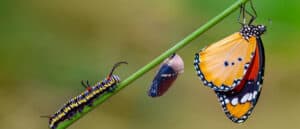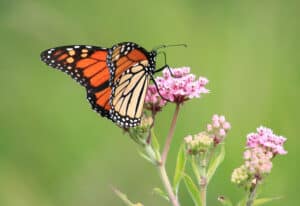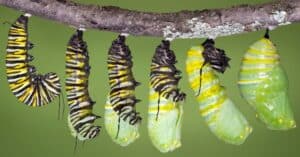The Danaus plexippus, also known as the monarch butterfly, is a fascinating species that feeds on milkweed plants. Different people across the world refer to this species as a black-veined brown, a wanderer, or even a common tiger. Want to learn more about this beautiful butterfly? Keep reading to explore 10 incredible monarch butterfly facts!
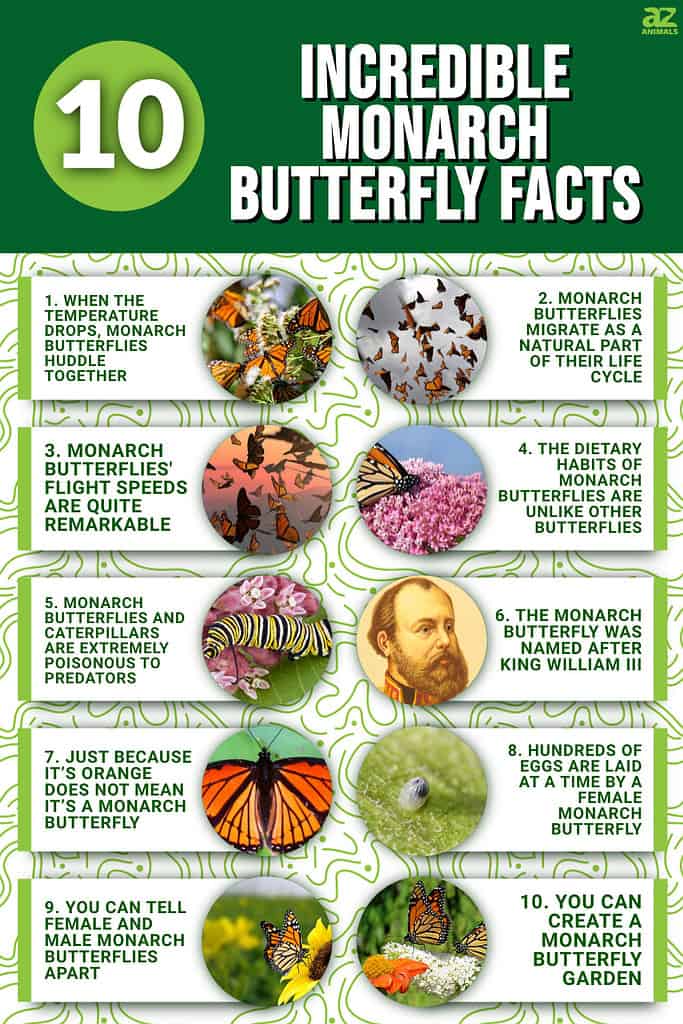
1. When the Temperature Drops, Monarch Butterflies Huddle Together
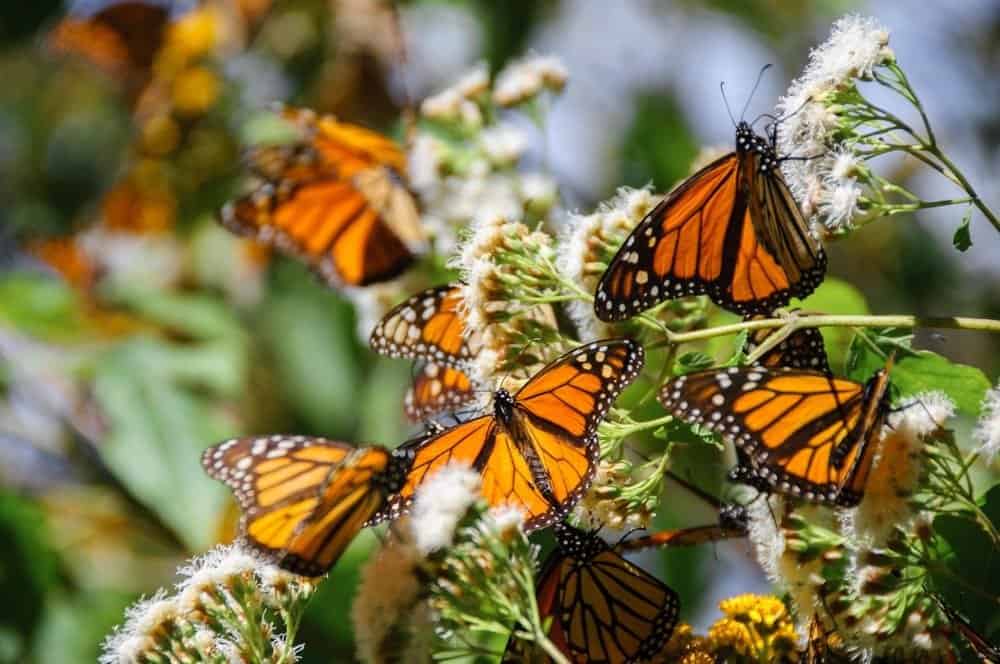
Monarch butterflies come together on trees at night.
©Noradoa/Shutterstock.com
Monarch butterflies migrate only during daylight. At dusk, they swarm down from the mountains and form dense groups on the ground known as a roost or bivouac. The monarch butterfly population can swell to the thousands on one tree!
Although a single monarch butterfly weighs as little as a gram, thousands and thousands of them add up to a significant mass. Although oyamel trees can usually handle the weight of a group of butterflies, some branch breaks do occur.
2. Monarch Butterflies Migrate as a Natural Part of Their Life Cycle
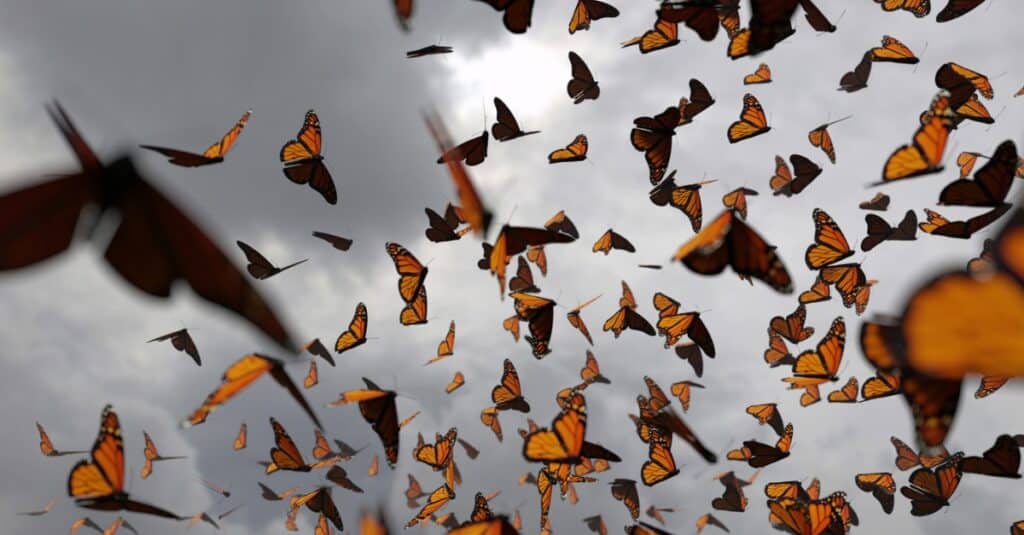
Some monarch butterfly migration patterns are as long as 3,000 miles.
©iStock.com/dottedhippo
The monarch butterfly’s migration is an innate behavior. Although a butterfly itself might not make it back to its natal pond, the butterflies that hatch from its eggs will. The monarch butterfly could fly as much as 100 miles per day and annually migrates up to 3,000 miles. Combining air flow and thermals is necessary for such a long journey.
3. Monarch Butterflies’ flight Speeds Are Quite Remarkable
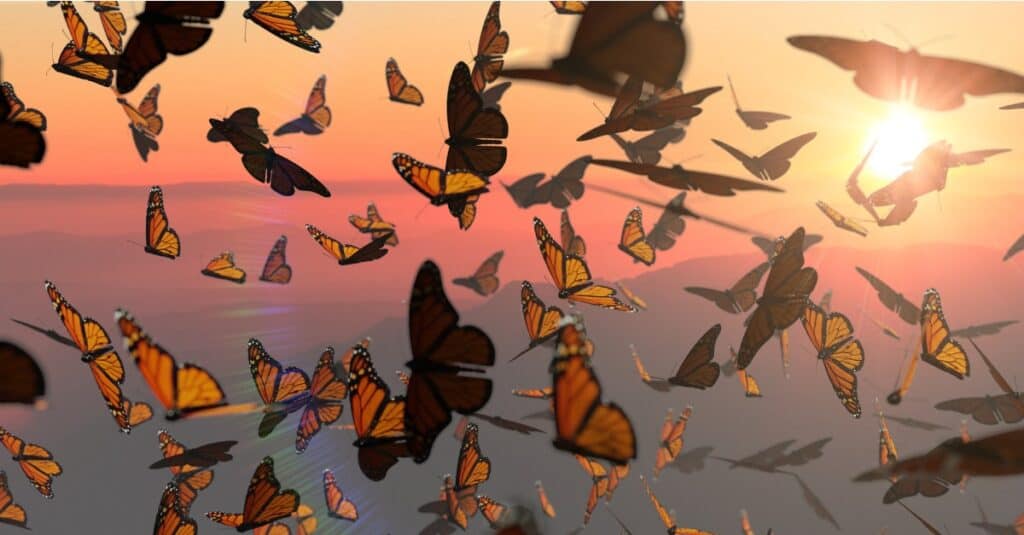
Monarchs can fly at a rate of 12 mph and altitude of 10,000 feet.
©Dotted Yeti/Shutterstock.com
The monarch butterfly can fly at the rate of four to 12 mph. For perspective, the normal human jogging speed is between six to eight mph. If conditions are right, monarch butterflies can soar to altitudes of up to 10,000 feet high. In one day, the farthest-flying monarch butterfly ever recorded traveled over 260 miles!
4. The Dietary Habits of Monarch Butterflies Are Unlike Other Butterflies
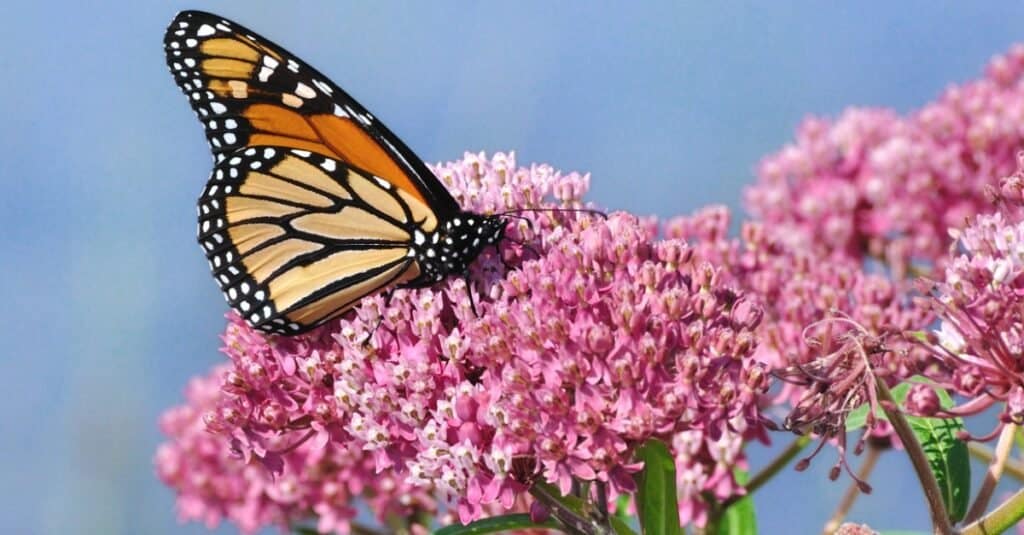
Milkweed is the only flower that monarch caterpillars use as a food source.
©iStock.com/herreid
Monarch butterflies can gain 2,700 times their original mass. These little caterpillars then go on to eat a poisonous plant called milkweed. A monarch caterpillar stays as such for around 10 to 17 days. Once a monarch caterpillar becomes a butterfly, its lifespan only lasts two to six weeks.
5. Monarch Butterflies and Caterpillars Are Extremely Poisonous to Predators
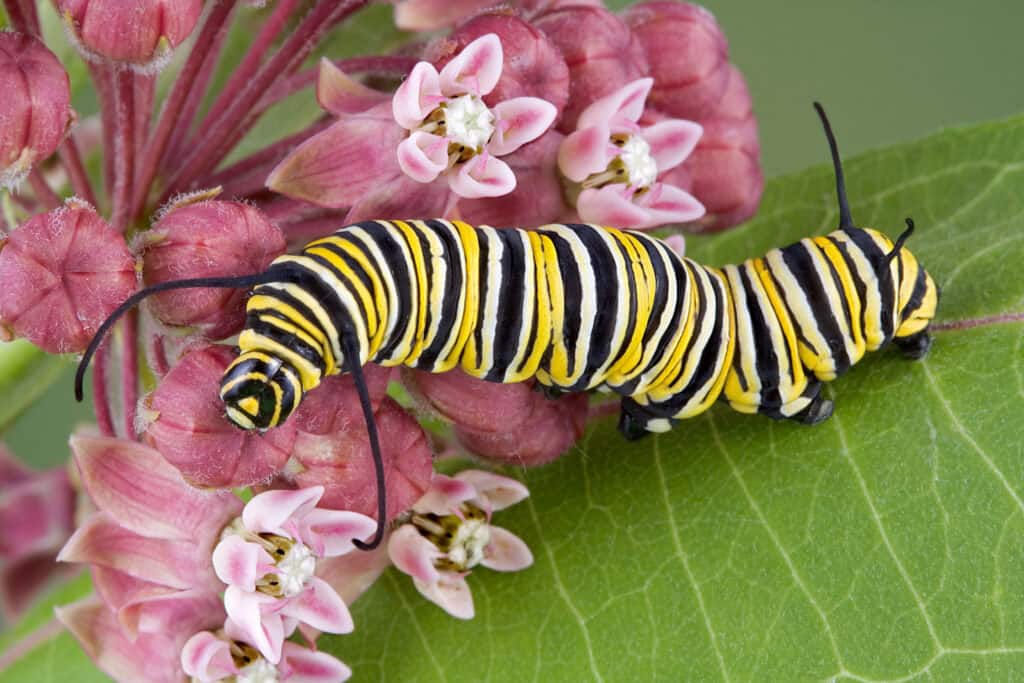
Monarch caterpillars eat milkweed, which contains toxin if ingested by predators.
©Cathy Keifer/Shutterstock.com
The milkweed that both the monarch caterpillars and the butterflies rely on for survival includes a toxic poison that deters predators. Monarch butterflies are harmful to birds of prey because they can absorb but resist the plant’s toxin. The poisons accumulate in their bodies and ruin the flavor for everyone. Their predators have learned to avoid them as time has gone on. In fact, the predators of these butterflies see their orange wings as a warning.
6. The Monarch Butterfly Was Named After King William III

Monarchs are named after King William.
©Georgios Kollidas/ via Getty Images
As a result of the early settlers’ admiration for the monarch butterfly’s striking orange coloring, the species was given the name “monarch” in honor of King William III, who was also known as the Prince of Orange. Thousands of small, colorful scales cover a monarch butterfly’s wing giving it this vivid orange hue. The natural breakdown of these scales causes the monarch butterfly to lose its vibrancy near the end of its life cycle.
7. Just Because It’s Orange Does Not Mean It’s a Monarch Butterfly
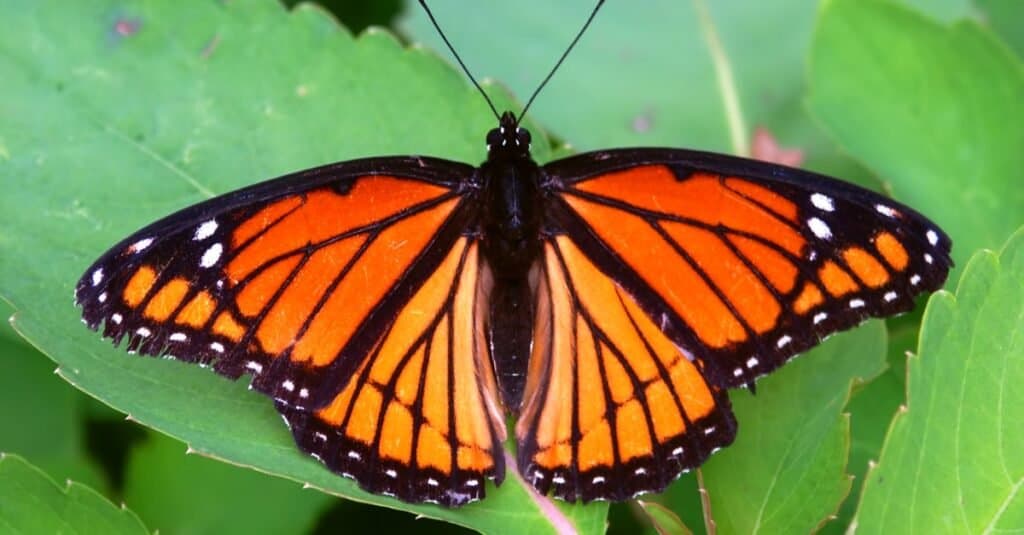
Viceroy butterflies look similar to monarchs.
©Jason Patrick Ross/Shutterstock.com
There are other species of butterflies that resemble monarchs in appearance; they include the queen, soldier, and viceroy butterflies. On the other hand, there are key distinctions that set each type apart. The vivid orange wings contain several black lines. Also, their black wings have white spots along the edges.
8. A Female Monarch Butterfly Lays 100s of Eggs at a Time
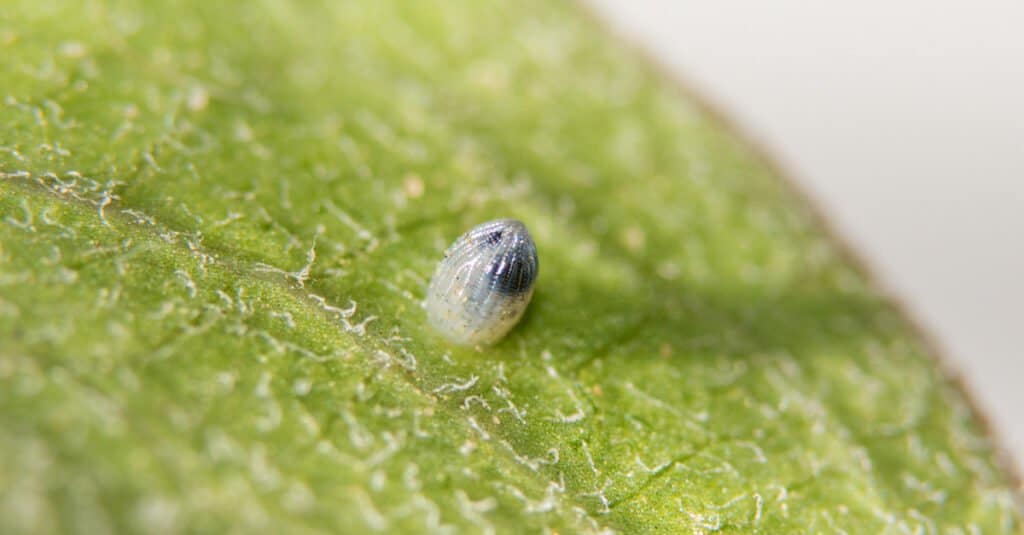
A female monarch butterfly can lay up to 700 eggs at a time.
©Sari ONeal/Shutterstock.com
In the wild, a female monarch butterfly can produce hundreds of eggs, typically on milkweed plants. The number of eggs a butterfly lays increases dramatically when it is grown in captivity. The female deposits her sticky-coated eggs on the underside of poisonous milkweed leaves. Several days after hatching, the caterpillar feeds exclusively on the milkweed leaves on which it was hatched!
9. How to Tell Females and Males Apart
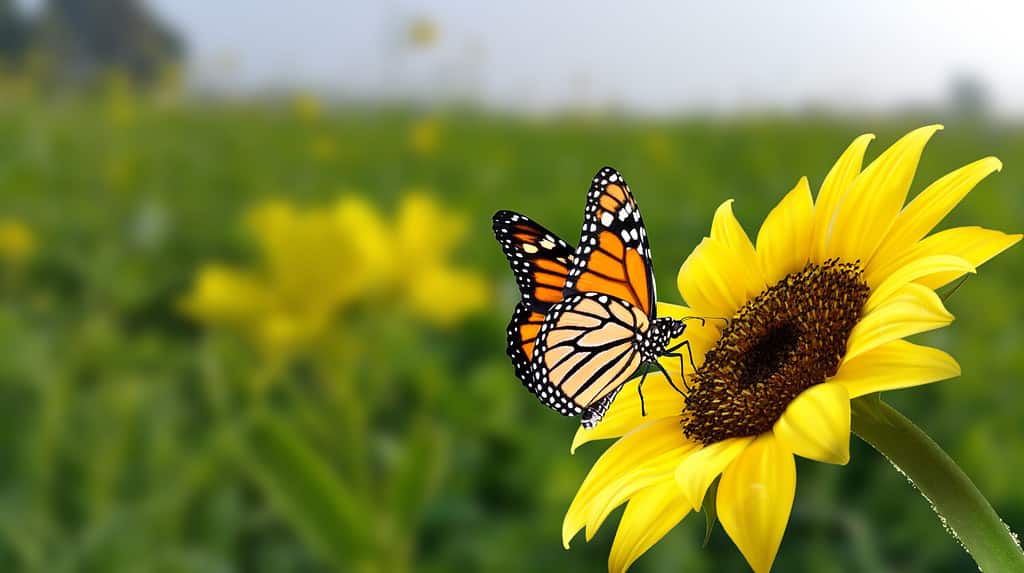
To distinguish between male and female Monarch butterflies, pay attention to their wing veins.
©Candy_Plus/Shutterstock.com
Differences between males and females are rather inconspicuous. A male has a little black mark on the wing vein right underneath the discal cell. This black spot is absent in females. The mark is clearly apparent whenever the wings spread, and occasionally even when they close. The wing veins of males are also slightly less prominent than those of females.
10. You Can Create a Monarch Butterfly Garden!

Monarch butterflies like natural vegetation.
©emkaplin/Shutterstock.com
Monarch butterflies are important pollinators for gardens and ecosystems. Growers should consider monarch caterpillar plants. Milkweed plants allow caterpillars to feed immediately after hatching. Aside from milkweed, these butterflies are also known to enjoy butterfly weed, coneflowers, asters, Bee balm, Joe Pye weed, golden rod, liatris, and penstemon.
Common milkweed is only somewhat harmful to humans, although this is only if it is ingested in large amounts. Milkweed can also cause skin and eye irritation if handled. Therefore, for your own safety, you should take precautions, such as wearing gloves or washing your hands immediately after handling. Although monarch caterpillars and butterflies can be harmful if consumed, touching them will not lead to any negative repercussions. However, out of respect, we should avoid handling butterflies and view them from a distance.
The photo featured at the top of this post is © Sari ONeal/Shutterstock.com
Thank you for reading! Have some feedback for us? Contact the AZ Animals editorial team.



